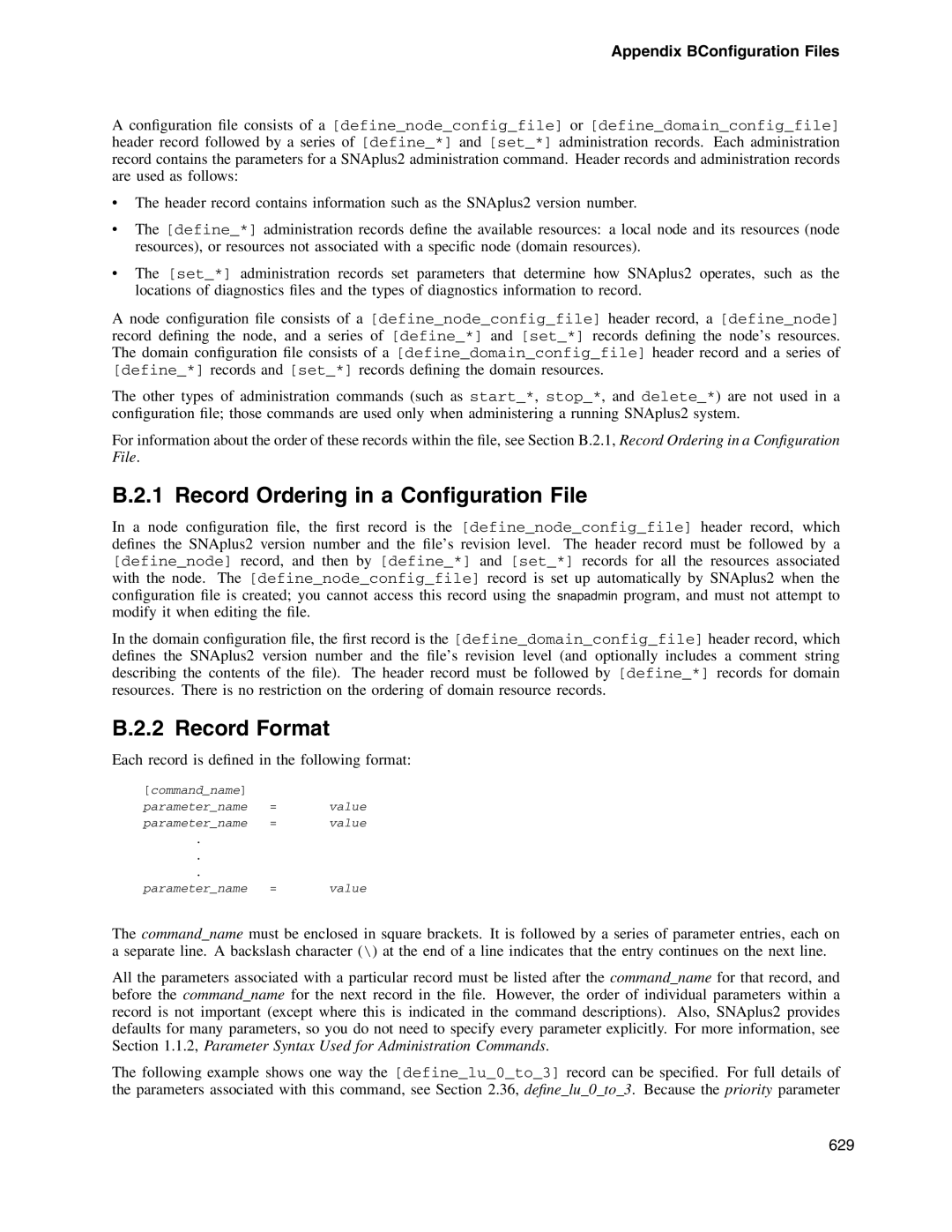Appendix BConfiguration Files
A configuration file consists of a [define_node_config_file] or [define_domain_config_file] header record followed by a series of [define_*] and [set_*] administration records. Each administration record contains the parameters for a SNAplus2 administration command. Header records and administration records are used as follows:
•The header record contains information such as the SNAplus2 version number.
•The [define_*] administration records define the available resources: a local node and its resources (node resources), or resources not associated with a specific node (domain resources).
•The [set_*] administration records set parameters that determine how SNAplus2 operates, such as the locations of diagnostics files and the types of diagnostics information to record.
A node configuration file consists of a [define_node_config_file] header record, a [define_node] record defining the node, and a series of [define_*] and [set_*] records defining the node’s resources. The domain configuration file consists of a [define_domain_config_file] header record and a series of [define_*] records and [set_*] records defining the domain resources.
The other types of administration commands (such as start_*, stop_*, and delete_*) are not used in a configuration file; those commands are used only when administering a running SNAplus2 system.
For information about the order of these records within the file, see Section B.2.1, Record Ordering in a Configuration File.
B.2.1 Record Ordering in a Configuration File
In a node configuration file, the first record is the [define_node_config_file] header record, which defines the SNAplus2 version number and the file’s revision level. The header record must be followed by a [define_node] record, and then by [define_*] and [set_*] records for all the resources associated with the node. The [define_node_config_file] record is set up automatically by SNAplus2 when the configuration file is created; you cannot access this record using the snapadmin program, and must not attempt to modify it when editing the file.
In the domain configuration file, the first record is the [define_domain_config_file] header record, which defines the SNAplus2 version number and the file’s revision level (and optionally includes a comment string describing the contents of the file). The header record must be followed by [define_*] records for domain resources. There is no restriction on the ordering of domain resource records.
B.2.2 Record Format
Each record is defined in the following format:
[command_name] |
|
|
parameter_name | = | value |
parameter_name | = | value |
. |
|
|
. |
|
|
. |
|
|
parameter_name | = | value |
The command_name must be enclosed in square brackets. It is followed by a series of parameter entries, each on a separate line. A backslash character (\) at the end of a line indicates that the entry continues on the next line.
All the parameters associated with a particular record must be listed after the command_name for that record, and before the command_name for the next record in the file. However, the order of individual parameters within a record is not important (except where this is indicated in the command descriptions). Also, SNAplus2 provides defaults for many parameters, so you do not need to specify every parameter explicitly. For more information, see Section 1.1.2, Parameter Syntax Used for Administration Commands.
The following example shows one way the [define_lu_0_to_3] record can be specified. For full details of the parameters associated with this command, see Section 2.36, define_lu_0_to_3. Because the priority parameter
629
